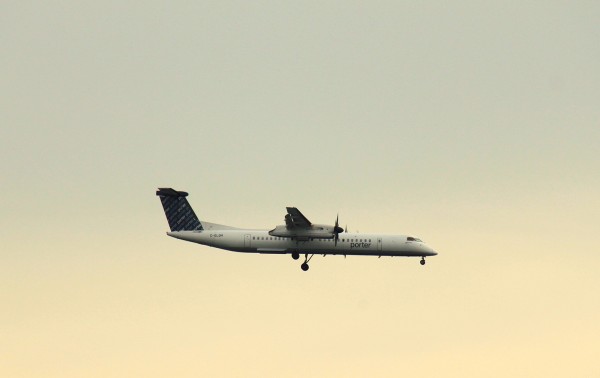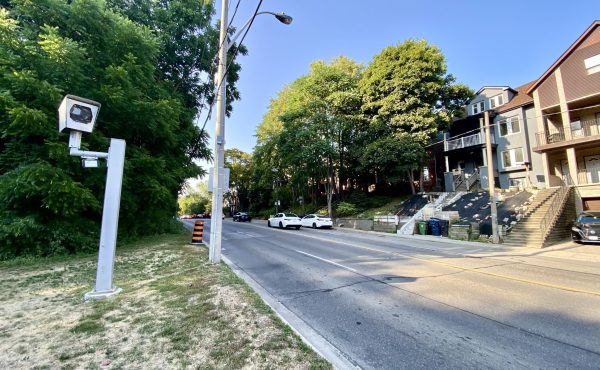
Later this morning, Waterfront Toronto (WT) will release an economic impact study, the latest in a series of analyses [PDF] that seek to show how the public dollars that have flowed into the development agency yielded returns such as jobs, expenditures on materials, and new tax revenues. With WT at the half-way point of its approved 20-year mandate, many of the big projects will come on-line in the next few years, including the $110 million stem-to-stern remake of Queen’s Quay Blvd.
The attendees for the event include various private sector worthies, as well as councillor Michael Thompson, MPP Glen Murray (the Liberals’ transportation and infrastructure minister), and Lisa Raitt, the federal labour minister.
It’s a kind of homecoming for Raitt, whose last pre-politics gig as CEO of the Toronto Port Authority during Robert Deluce’s four-year campaign to launch Porter Airlines. Those who have frequented past WT pressers will know that the Feds are almost always represented by finance minister Jim Flaherty, who was present at the birth and has long taken a generally constructive interest in the agency’s activities.
So Raitt’s presence is noteworthy, and hardly coincidental, given that Deluce, her previous client, is pushing hard to re-open the tripartite agreement so a smaller species of Bombardier jet, the CS-100, will be allowed to use Billy Bishop.
(When he first appeared with the plan to revive the island airport, in 2002, Deluce insisted that jets — banned under the deal between the TPA, Ottawa and the City — weren’t on his radar. As the Toronto Star reported on October 5, 2002, “While Deluce is adamant he has no plans to use jets, many waterfront residents fear expanded turboprop service out of the island is the thin edge of the wedge.”)
I’m guessing the WT’s economic impact study will be rapidly overtaken by jet questions. A spokesperson for Murray told me the minister “is very interested in learning more but it is a federal-municipal issue.” Raitt, needless to say, will almost certainly be asked for her views on Deluce’s gambit.
What’s apparent is that WT officials — who have a long history of maintaining a studied neutrality on the subject of the island airport’s current operations — want to pose a lot of questions if council votes to order up a formal study by early July, as recommended last week by executive committee.
In an interview yesterday, WT chief executive John Campbell itemized for me a range of potential impacts that jets could have on waterfront development:
- traffic congestion, especially on the newly reconstructed, and narrower, Queen’s Quay Blvd, which will be completed by 2015;
- noise;
- public realm;
- boating and maritime activity in the harbour area.
He points out that the development in the waterfront area must already accommodate pre-determined emergency flight paths for the Q400 Bombardier turprops, and it’s not clear how the introduction of jets would impact planning and zoning policies for the Portlands and the East Bayfront.
Campbell said he also wants to know whether an approval for the use of CS-100s opens the door to other commercial jets. “We don’t know if the Toronto Port Authority wants just CS-100s or everything.”
If council does decide to proceed with a study, Campbell believes the public sector agencies should set the terms of reference and decide on the choice of consultants, but Porter should pick up the tab. “We don’t want opinions based on ideology. We want the proper research done.”
Campbell, who says he was “surprised” by Deluce’s announcement, stresses that WT will make a point of asserting its perspective. “To date,” he notes, “we’ve been able to co-exist with the airport in its current format.”
That forbearance appears to be a thing of the past.





5 comments
The use of that word ‘jets’ puts my teeth on edge. Only the military use jet engines. Civil aviation aircraft that are sometimes called ‘jets’ use gas turbines the “propellors” of which are the blades of the turbofans. The turbofans being shrouded by the engine housing, they are often more quiet than engines with external propellors. The CS-100 is particularly designed to be energy efficient as well as very quiet. One cannot help thinking that all this fuss must be in pursuit of an objective that is nothing to do with either science or environment.
I almost think that half the support for expanding the island airport is borne out of resentment for those fortunate enough to live on the island.
But leaving the islanders aside, the fact is that Waterfront Toronto has a great interest in what happens here. As anyone who frequents Cherry Beach knows, the air traffic in and out of the island airport is a considerable nuisance. Well, it just so happens that a good part of the Waterfront Toronto mandate is the development of the lower Don. And this happens to lie directly in the flightpath of planes using the island airport.
So no, we aren’t talking about just the 800 or so islanders, or even the waterfront condo dwellers. We are talking about tens of thousands of new residents we hope to attract to the portlands. I hope Waterfront Toronto understands this.
Strategy to get jets on the waterfront:
Step 1: build a tunnel capable of handling greater passenger volumes.
Step 2: get potentially lengthy EA done on the motor boat exclusion zone to help speed up the runway lengthening process.
Step 3: avoid consulting residents and city councillors beforehand to ensure first-mover advantage.
Step 4: announce the jet purchase order. Use potential deadline on said purchase order to shorten the time in which city hall and the public can get all the facts.
Step 5: execute PR strategy to obfuscate traffic congestion and noise issues. Use catchy sound bites (e.g., “whisper” jets), biased robopolls and invented job creation figures. Post lots of pro-airport comments (preferably technical ones) on media message boards.
Bettie,
As a non-jet-fan-boy, I could care less if the word ‘jets’ parts your hair or not. If they build a bigger runway, I’m assuming that (a) the planes keep getting bigger and more numerous and (b) I keep getting dismissed as a non-fan-boy every time I point out that making Pearson more accessible makes way more sense than overbuilding a small airport in the harbour.
Porter and the BBD planes have been very successful at Toronto City. Does that mean they need to expand? Not in my book.
This deserves a lot of attention as some papers like the Toronto Star seem to be kinda quiet, perhaps due to the many full-page ads from Porter they’ve had.
We need to have a real distrust of the proposal, given promises made, but not fully done, or broken.
We need full environmental screens too: aviation fuel likely still has lead in it by the way, there is NOT good greenhouse gas accounting and we need less consumption, and the noise is very much of an issue for many, and an increase in flights is an increase.
It will be interesting to see if this airport scheme is what finally punctures the real estate bubble as presumably the many many many more condos in the core will become less of a “buy” given the elasticity of firm no jets statements and possible expansions.